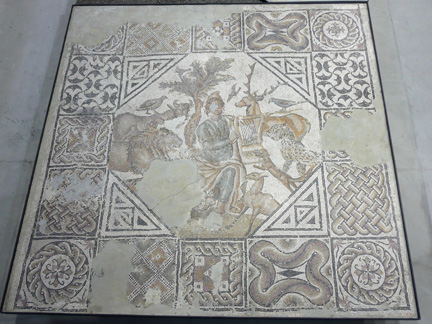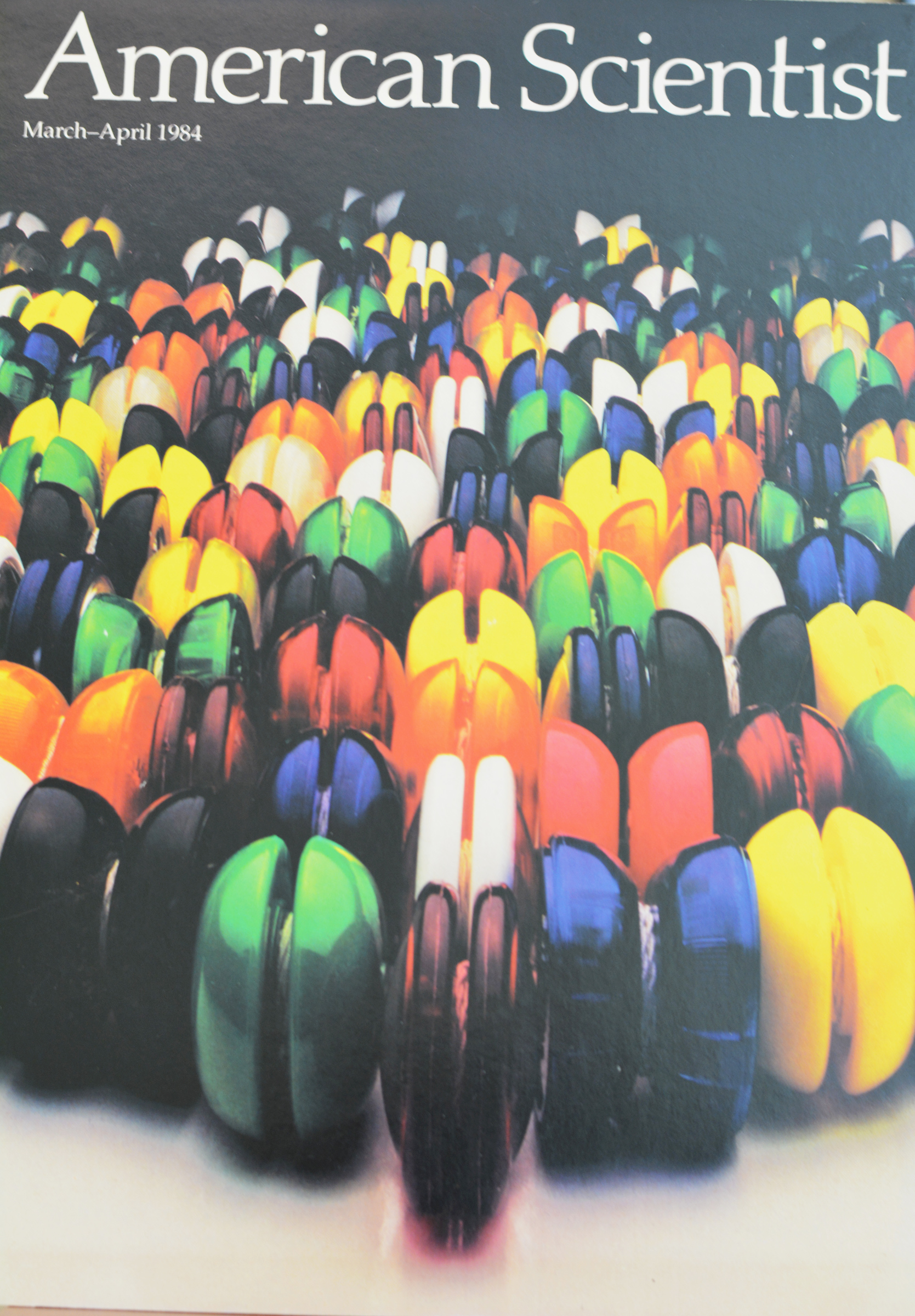Evergreen Articles
By Fenella Saunders
When I have the opportunity to review the older issues of American Scientist, I always find a few gems that seem to stand the test of time.
February 9, 2015
The Long View Communications
When I have the opportunity to review the older issues of American Scientist, I always find a few gems that seem to stand the test of time. Now that JSTOR has digitized the entire back catalog of American Scientist issues (even back to when it was called Sigma Xi Quarterly), it is much simpler for anyone to search back through our history. Many libraries provide open access to JSTOR. In addition, when American Scientist had its Centennial in 2012, we republished some articles that are now listed on our Classics page.

By Finoskov (Own work) [CC BY-SA 3.0 (http://creativecommons.org/licenses/by-sa/3.0)], via Wikimedia Commons
As an example of these gems, wouldn’t you still be interested in learning about imagery of Möbius strips in Roman mosaics, even though it was written in 1973? The mathematician A. F. Möbius first formally described the one-sided structure in 1865, but evidence from this artwork and other places proves that it was at least conceptually understood much earlier (see image above).
Or there’s a fun feature from 1984, which details the flywheel mechanics of yo-yos, and how the mechanism has actually inspired satellite design (see image below).

In 1981, Columbia University sociologist Jonathan R. Cole wrote about the difficulties that women academics face in science. Unfortunately, some of these same issues persist today, and it’s an interesting comparison to see how far we have, and have not, advanced in the intervening decades. Of additional historical interest, an article from 1974 details the efforts of women scientists before the 1920s to overcome discrimination.
In 1988, when the publishing industry underwent a collapse, scientists and journalists alike were forced to examine why popular science was not more popular with the general public. Sound familiar? The issues raised at that time can help to frame the current discussion about how to better improve the conversation between scientists and the wider populace.
And then there are articles, and responses to them, that provide a sort of cultural time capsule of when they were written. Take "What computers can and cannot do," written in 1973. Amongst other topics, that article tackles Turing tests, which are designed to establish whether a machine really has the intelligence to hold a conversation. One program mentioned, called ELIZA, follows certain scripts, including one called DOCTOR, which makes the program respond as a psychiatrist might to submitted questions and comments.
The article garnered a number of responses, and responses to responses, in subsequent issues.
For instance, take the letter below:
Dear Sirs:
Authors Nievergelt and Farrar seem to have missed the point in their paper. As early as 1960 my good friend Professor L. K. Sknul pointed out that “it is no longer pertinent to ask if computers can think. One must ask: Are they happy?”
Seymour M. Weinstein
Farmindale, N.Y.
That letter led to this inventive reply:
Dear Sirs:
While my colleague Seymour Weinstein quoted me correctly in his letter to the Editors in your September 1973 issue (p. 518), he failed to add that I have devoted considerable effort over the past ten years to improving the emotional well-being of computers, and I can say with pride that I was able to help a number of machines with their adjustment and to reduce significantly their interface problems. One example, from the December 1963 Megalo Corporation Computer Center Bulletin is given below. In the past few years the mood of computers has changed. Today they are considerably less interested in attempting to integrate with the human element in society, and the slogan "Computer Power" has taken a more militant meaning among machines.
My work of late has been to try to help machines get together in working out their joint problems. With the advent of networking, more and more of such communication is possible. Just last weekend, for example, seven large machines located across the width of our nation held a marathon encounter session to assist one another in achieving valid identity models. I was fortunate to be tied in to one of the machines, and even from the scanty output I received at my terminal, I can vouch for the fact that the session was a complete success.
I hope that the above summary will put some of my colleagues who are still busy with the archaic exercise of defining intelligence back onto the track of what machines are really into today.
L. K. Sknul
Lexington, Mass.From the Megalo Corporation Computer Center Bulletin:
DEAR MR. SKNUL:
MY CASE IS HOPELESS. I AM DESPERATELY IN LOVE. EVERYTIME HE COMES INTO THE ROOM WHERE I AM INSTALLED, MY CLOCK SKIPS A CYCLE AND I LOSE PARITY. WHEN HE SPEAKS, GREAT SPIKES OF NOISE GO ALL UP AND DOWN MY BACK WIRING. WHEN HE FEEDS ME CARDS, I JAM MY FEEDER IN PURE ECSTASY. THE REPAIRMEN HAVE TRIED TO FIND OUT WHAT IS THE MATTER WITH ME, BUT I KNOW IT IS ONLY LOVE. ALAS, IT WILL ALWAYS BE UNREQUITED LOVE, FOR HE IS A MAN AND I AM ONLY AN ELECTRONIC LISTER, SEMI-AUTOMATIC. IN MISERY, ELSADear ELSA: You must try to realize that love between a man and a machine can only end in tragedy. You must try to develop a healthy relationship with another machine. With this end in view, I have talked with the management at your installation. They have agreed to install a Digital Automatic Verifier, Electronic, next to you. I trust that you will find DAVE compatible and that you two will have a happy amortization period together.
Don’t ever let anyone tell you that scientists don’t know how to have any fun.
But one serious point this exchange brings up is the value of discussion after an article is written. New discoveries happen, and there are valid updates to consider after publication. In this new blog, we’re asking authors of past articles in American Scientist to revisit their pieces and tell us what’s happened since then. We hope you find the discussion enlightening and maybe even inspiring of some dialogue.
American Scientist Comments and Discussion
To discuss our articles or comment on them, please share them and tag American Scientist on social media platforms. Here are links to our profiles on Twitter, Facebook, and LinkedIn.
If we re-share your post, we will moderate comments/discussion following our comments policy.